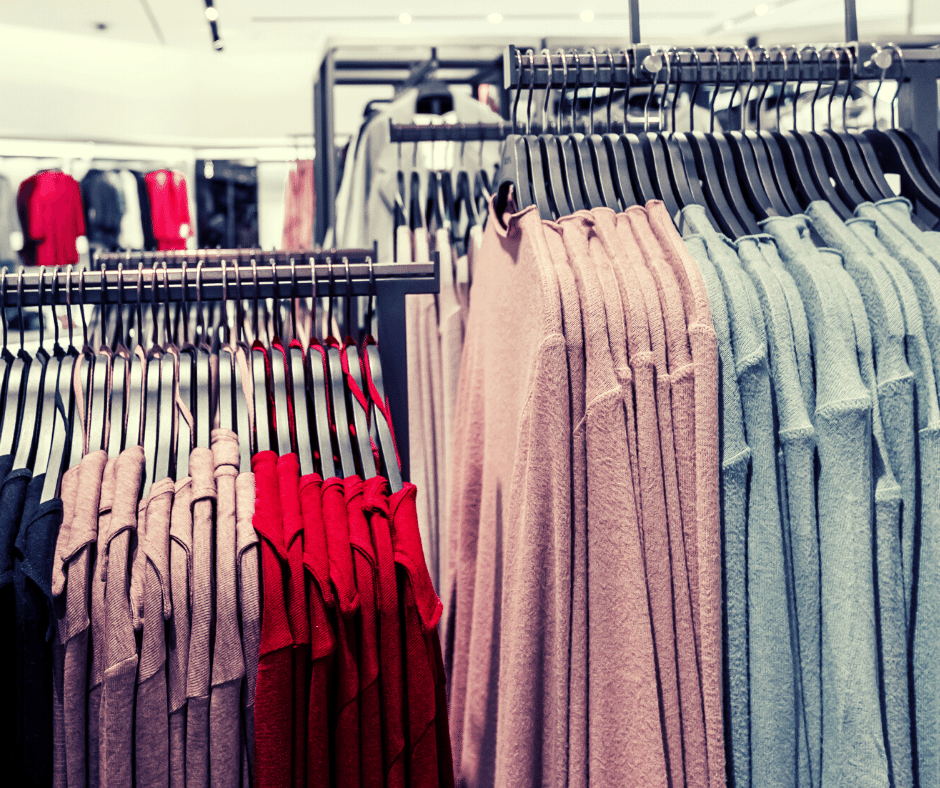Secondhand is Back in Fashion
by Emily Impey
Pre-loved, vintage, retro, thrifting – whatever you want to call it – it’s back in fashion!

A growing number of us are becoming more conscious about the environmental impacts of the clothes we buy. Any stigma asscociated with buying secondhand has disappeared as we've seen a sharp rise in pre-loved fashion and clothing resale platforms, making it easier and better than ever before.
Why buy pre-loved?
Better for the environment: This one might be obvious but buying secondhand clothing rather than new extends the life of products, diverts waste from landfill, and reduces resources used for making new clothes. To put it in perspective:
· Clothing production generates more emissions than international plane travel and shipping combined
· Fashion is the second highest polluting industry, after oil
· The fashion industry produces 20% of total global water waste
Add to that the continued deforestation of land, production of microfibres and microplastics, and generation of other greenhouse gases and harmful toxins, and it’s clear secondhand is an environmentally better option.
More socially ethical: Exploitation, sweatshops and modern slavery are often at the core of fast fashion production. According to Fashion Checker 93% of brands don’t pay garment workers a living wage, and a 2019 Oxfam report found that of workers in Bangladesh, 90% cannot afford enough food for themselves and their families, 72% cannot afford medical treatment, and one in three are separated from their children. Buying secondhand clothes is one of the top things you can do to dress more ethically.
Reduces the demand for fast fashion: Buying secondhand items keeps them in use for longer, extending their life and reducing the need for production of new items. Fashion brands are there to fulfil our desires and demands, so if we reduce the demand and stop buying fast fashion eventually brands will follow and reduce production.
Supports your community: Often secondhand clothing is sold by charity stores, so this is a great way to give back while getting something new and support your local community and those in need.
Better prices: Buying secondhand clothes is a great way to not only help the environment, but also help your wallet. You can often find trusted high-street brands at significantly discounted prices, and there are even boutique stores that sell pre-loved designer items. Scour your local op shops, flea markets, or online platforms to see if you can snap up a bargain.
Find one-of-a-kind items: Shopping secondhand is a great way to find unique and statement pieces so you don’t rock up to a party with the same outfit on as someone else. The likelihood of finding two of the same items in thrift stores is pretty minuscule. And as many secondhand items are older fashions or vintage items no longer being made, if you see a piece you like grab it quick as chances are you won’t be able to find it again.
It’s fun: Secondhand shopping can be a fun and social activity. Take a friend and see what gold you can find, make it a challenge to find those key items on your list, get to know your local area better, or even visit stores further afield and explore a new area of your city.
Where to buy secondhand clothes?
Op shops: With the added benefit of being for charity, op shops are a great place to hunt down pre-loved clothing. They often have large amounts of stock, so you’ll have to search but can be sure to get some good items at great prices. Try Vinnies, Salvos, Lifeline, Red Cross, Asthma Foundation, RSPCA stores and more!
Consignment stores: Consignment stores are more selective about what items they sell and have taken out the hard work for you in filtering it down to good quality, unique pieces. A great opportunity to score designer labels at a reduced price!
Online: There are numerous apps and online platforms now that make this easy, from social sharing marketplaces such as Facebook Marketplace, eBay, gumtree, Depop and Carousell, or companies that do the hard work for you such as SWOP, Yordrobe, Preloved Clothing Co and Vestiaire Collective. Check out this great Clean Up guide to thrifting online for more tips and tricks.
Retailers: Many high street retailers and big fashion brands are getting in on the love for pre-loved. Outdoor clothing brand Patagonia has launched Worn Wear, where you can buy used and vintage items and can even trade in old items for credit for new things. Luxury handbag label Mulberry is now refurbishing and reselling its used products online. And while not available in Australia just yet, H&M has launched secondhand clothing stores Sellpy in Europe and Rewear in Canada.
Sell your old clothes
Got some clothes that no-longer fit or are no longer your style and have been sat in the back of your wardrobe for a while? Why not turn your closet into cash! Any items that are still in good condition could be sold to be worn again by someone else, while making you some extra money on the side.
Sell online: Just as it’s now easy to buy secondhand clothes online, selling through clothing re-sale platforms is also easier than ever. Check out the list above of where to buy pre-loved online for some ideas of where to start.
Have a garage sale: Clear out your closet and set it up in your garage or on your front garden. Make sure all items are washed and ironed and display them nicely on hanging racks to entice buyers and make it easier for them to search through. You could join forces with friends and each have a ‘stall’ at the sale, join a garage sale trail, or even host a virtual garage sale.
Emily is a traveller, fitness fan, and writer with a passion for encouraging everyone to create a positive impact for people and planet.
Search for other blog topics:





